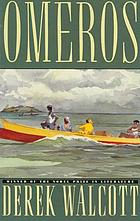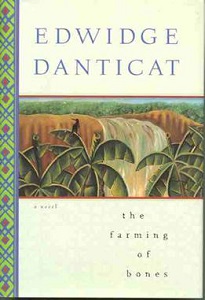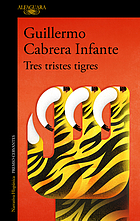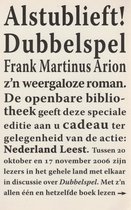
Caribbean Literature - A Reading List
Caribbean literature holds a unique position in the world. Literature produced in the Caribbean region is extremely diverse, not only because of the wide variety of languages spoken, but also due to distinct colonial legacies that exist in the archipelago. Despite cultural specificities, the region as a whole shares that it is characterized by an inheritance of colonialism, which makes Caribbean societies deeply layered and highly complex. Consequently, many of the themes in Caribbean literature deal with trying to work through this complicated heritage.
Despite being at the center of colonial enterprises, the Caribbean region has held a marginal position for a long time in relation to Europe and, later, the United States. When we consider great works of literature written in Western languages such as English, French, Spanish and Dutch, perhaps Caribbean literature would not be at the front of our minds. This omission is illustrative of a long-standing tradition of Eurocentrism in which European literature is positioned center-stage, whereas colonial literature occupies a position in the margins. Only in recent decades, this development has been countered by voices of resistance that plead for the centralization of the formerly marginalized authors.
The literary activity in the Caribbean Archipelago is truly unique and has resulted in some of the most vibrant examples of prose and imagery in both Western and Creole languages. Several writers who are either born in or related to the Caribbean -such as Derek Walcott (1992), V.S. Naipaul (2001) and Jean-Marie Le Clézio (2008)- were awarded the prestigious Nobel Prize in Literature. The titles here have been selected in the dominant languages spoken in the Caribbean and vary from St. Lucia and Trinidad and Tobago, Cuba, Haiti and the Dutch Caribbean.

Derek Walcott, Omeros
1990
Omeros, the acclaimed epic by poet, playwright, and Nobel laureate Derek Walcott (1930-2017), is situated on St. Lucia, the author’s birthplace. This unparalleled reimagining of Homer's Odyssey explores both the colonial past and the complex present of the Caribbean islands, delving into the disappearance of the indigenous population and the violence inflicted on enslaved people. Walcott engages with European foundational narratives, not only the Iliad and the Odyssey but also the works of Virgil, Ovid, Dante and James Joyce. Against the vibrant backdrop of the Caribbean archipelago, Omeros uniquely blends classical heritage with contemporary and regional perspectives.

Edwidge Danticat, The Farming of Bones
1998
Ominously titled The Farming of Bones, Edwidge Danticat's book is a historical novel set in the Dominican Republic in 1937, during the Parsely massacre. This massacre took place under the dictatorship of Rafael Trujillo and specifically targeted Haitians living in the Dominican Republic. The mass killings resulted in tens of thousands of deaths, and by the end of the massacre, almost the entire Haitian population had either been killed or forced to flee to Haiti. The Farming of Bones follows the story of a young Haitian woman and her attempt to escape this outburst of extreme violence. The novel gives a moving account of the individual responses to the atrocities inflicted upon Haitian residents and their struggles to escape. By memorializing this event in her fictional work, which according to Danticat herself was largely forgotten, Danticat manages to instill in the reader the fear that victims must have felt as well as their incomprehension as to why they would be targeted so viciously.

Dany Laferriere, Comment faire l'amour avec un nègre sans se fatiguer
1985
Haitian-Canadian writer Dany Laferrière published the novel Comment faire l'amour avec un nègre sans se fatiguer in 1985. The French title is intentionally provocative, and is translated into English in 1987 as How to Make Love to a Negro Without Getting Tired. The novel centers on a black man who, already for the sole fact that is a black man in Montreal, feels like an outsider. In the novel, we read about his sexual adventures with white women, but we also get to see how, while musing about communism, he lies in his apartment (which he shares with another black man) listening to Charlie Parker and Archie Shepp. He reads Baldwin, Hemingway, Henry Miller and Bukowski and dreams of becoming a writer himself. Because of his sense of humor and "working-class intellectualism," Laferrière has been compared to writers such as Jack Kerouac, James Baldwin and Charles Bukowski.

Tip Marugg, Weekendpelgrimage
1966
Tip Marugg lived a relatively reclusive existence, alone in the house with a few dogs, on the former plantation Pannekoek, on Banda'bou: the deserted western part of Curaçao. He lived mostly at night, drank a lot and produced a modest oeuvre, which could have been much larger if he -as the greatest critic of himself- had not thrown away untold numbers of writings because he did not think they were good enough. The published oeuvre consists of three novels, namely Weekend Pilgrimage (1957), In the Streets of Tepalka (1967) and De morgen loeit weer aan (1988), and the collection of poems tellingly titled Afschuw van licht: gedichten 1946-1951 (1976) [Disgust of Light]. In 2009, the collected work was published posthumously under the title De hemel is van korte duur (edited by Aart G. Broek and Wim Rutgers).
Given the above, it should come as no surprise that Marugg's works are introspective and melancholic in nature, and that they always center on the inner world of a lonely, alcoholic, pensive man living a reclusive existence. Nor will it come as a surprise that the thought of death, and of suicide in particular, is never far away. Weekend Pilgrimage is Marugg's debut novel. The novel has hardly any plot. The unnamed first-person narrator, after a pub crawl on the night of Saturday to Sunday, crashed his car into a ditch and hit his head hard on the steering wheel. Once there, he reflects on his life, the island he lives on, and has all sorts of diverse memories with accompanying emotions. Marugg's books therefore do not revolve around something like "plot," but are dominated by an existential theme, in which feeling and perception play a crucial role. Tip Marugg ranks among the greatest Dutch-language writers of the twentieth century.

Alejo Carpentier, El Reino de Este Mundo
1949
Alejo Carpentier is often cited as one of the prime examples of magical realism that Latin American literature is so famous for. The poetical foundation put forward by Carpentier is, however, slightly different, using the distinct term ‘lo real maravilloso’ (the marvellous real). His argument is that in the case of Latin America it is hard to distinguish between what is ‘real’ and what is fiction, myth or legend. This blending of categories is exactly what we encounter in his book El Reino de Este Mundo.
The novel follows the story of Ti Noel, an enslaved person in Haiti, at the time of the Haitian Revolution toward the end of the 18th century. It is due to the perspective offered through the experiences of Ti Noel that this book achieves its unique character: through Ti Noel's position Carpentier is able to combine world views centered around African Folklore and the historical realities of the Revolution. The result is more than just a fictionalized historical account of events, namely also a story embedded in the cultural and political complexities of the island at that time.

Cynthia McLeod, Hoe duur was de Suiker?
1987
In her successful debut novel Hoe duur was de suiker? Cynthia McLeod describes the lives of two sisters at the time of the Boni wars between the Maroons and the Dutch colonial power in the last half of the 18th century. At the time, sugar was the main source of income for Suriname, which was a plantation economy and was therefore totally dependent on labor from enslaved people. Although the main characters of this book belong to the plantation owners, the novel nevertheless paints a picture of Suriname and the colonial realities that everyone had to deal with. This is done partly by describing the personal relationships between plantation owners and enslaved people, and partly the by depicting the violent confrontations between the Maroons and the Dutch. McLeod thus gives an impression of the constant fear of violence that was a daily reality for enslaved people and also the constant fear felt by plantation owners of an uprising. With her title, McLeod thus ironically plays on the idea of a colony that existed only for the sake of economic gain: The actual costs of a plantation economy are fundamentally of a different, more human nature.

Guillermo Cabrera Infante, Tres Tristes Tigres
1965
Tres Tristes Tigres by Guillermo Cabrera Infante is a rich linguistic tapestry that presents a captivating picture of pre-revolutionary Havana in the 1950s. Infante's narrative skillfully interweaves puns, wordplay and linguistic artistry, offering readers a vivid description of the city's vibrant nightlife. The novel serves as both a tribute and a thoughtful examination of Cuban culture, skillfully describing the characters' interconnected lives with humor and cleverness. The intricate structure reflects the multifaceted nature of Cuban society, offering a diverse range of voices and perspectives. Cabrera Infante's linguistic flair encourages readers to engage with the text, creating a distinctive reading experience. Tres Tristes Tigres is a literary kaleidoscope that offers a vivid snapshot of a bygone era that captures the spirit of Havana's cultural dynamism while deepening the complexities of language and identity.

Frank Martinus Arion, Dubbelspel
1973
Frank Marinus Arion is one of the most important Dutch-speaking authors. Not only was he one of the most prominent Black writers of the Dutch Caribbean. His novel Dubbelspel is also one of the first novels written in Dutch from a completely Black perspective. The novel is set on the island of Curaçao and follows the lives of four men – as well as their wives – that come together every week to play a game of dominoes. The title of the novel is a reference to the game, but also has a broader meaning as a reference to the complex relationships between culture, politics and the individual relationships between the characters themselves. A very clear example of this are the multiple examples of adultery not only of the men, but of their wives as well. Through the conversations the men have during their games and the actions of all the characters, Arion weaves a compelling tapestry of the complex relationships that exist in Curaçao socially, culturally and politically.

V.S. Naipaul, A House for Mr. Biswas
1961
A House for Mr. Biswas is the novel with which Vidiadhar Surajprasad Naipaul (1932-2018) made his breakthrough in 1961. Author and protagonist have some things in common: both were born in Trinidad as a consequence of their ancestors' 'decision’ to come to the Caribbean as indentured laborers/contract workers from the British Indian colony.
Displacement and the search for a permanent home is thus a major theme in the book. A home of his own is Biswas' ideal, but because of his background it is not easy to achieve. He must also fight his independence against his wife Shama's family, the Tulsis. On the first page of the book, the ending is given away: when Biswas dies, he has a house, but it is anything but luxurious and not paid off. His in-laws do come to the funeral, but not especially for him: "They all came. For them it was an occasion of reunion, no longer so frequent, for they had all moved to their own houses, some in town, some in the country."
Contact us
Do you have questions about borrowing the books above? Is a book missing on this list, or would you like the UBL to purchase a book that is not yet available in our collections? Contact us via Ask a Librarian.
